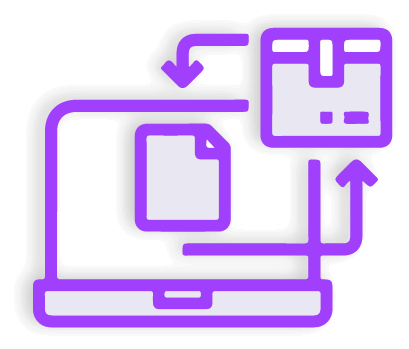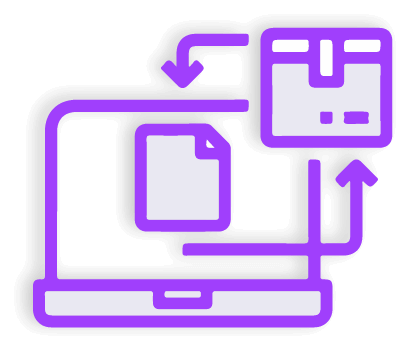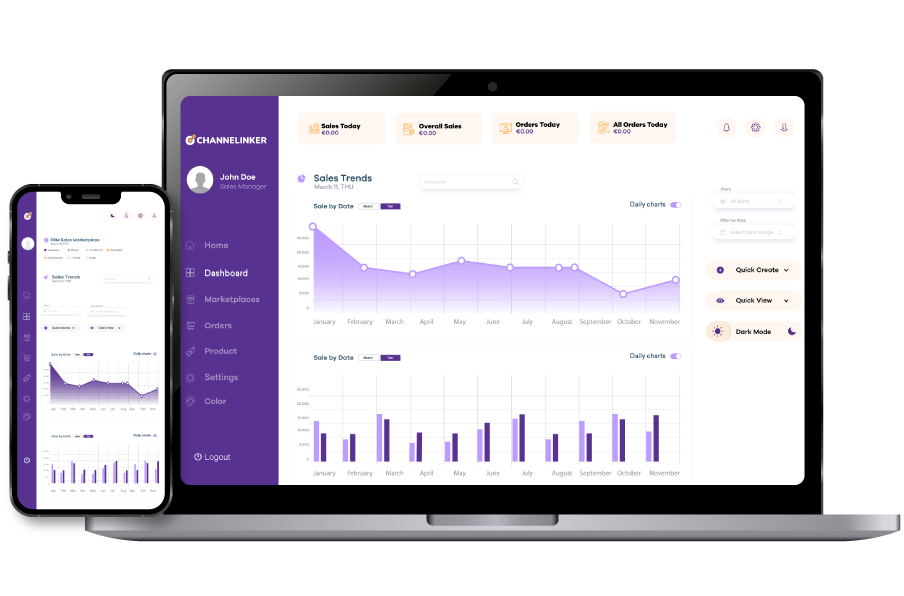How to Become an Amazon Vendor: Step by Step Guide for 2025
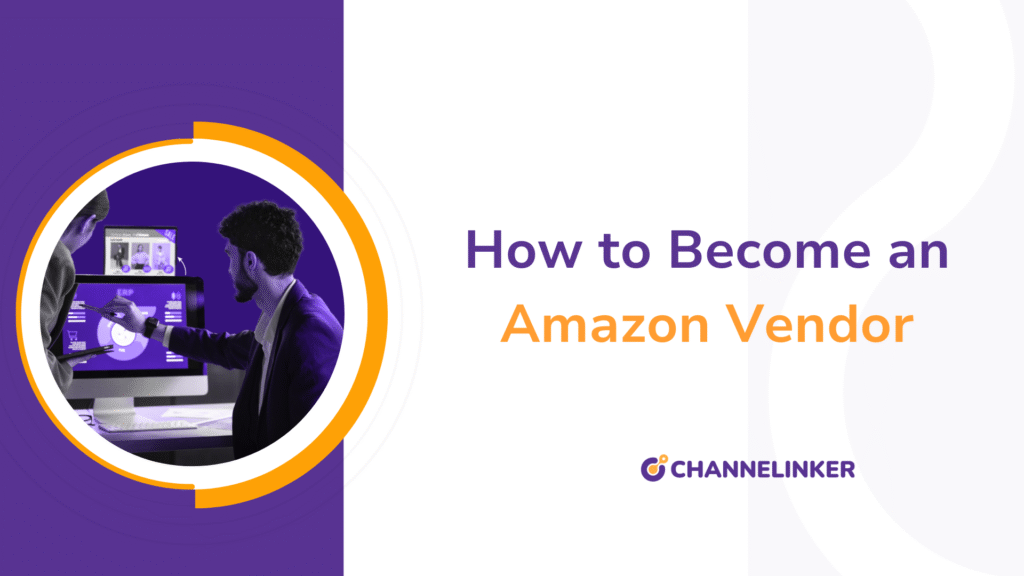
Table of Contents
Introduction
How to become an amazon vendor is a strategic question for brands that want to sell their products wholesale to Amazon, benefit from the credibility of Sold by Amazon on the product page, and tap into Amazon’s global retail engine. Unlike Seller Central, which is open for most businesses, Vendor Central is invitation only and operates as a first party relationship.
In this guide you will deeply learn why becoming a vendor can accelerate growth, what Amazon looks for in potential vendors, how to prepare for onboarding, which documents you need, the realistic alternatives if you have not been invited yet, and practical tips to get noticed by Amazon’s retail teams. For broader context on how the marketplace works, see Channelinker’s detailed overview Understanding the Amazon Marketplace 2025 Edition.
Why Become a Vendor
For the right brand, Vendor Central unlocks a different level of scale and trust. Core advantages include increased customer confidence because Amazon is the seller of record, access to large purchase orders that provide predictable wholesale revenue, streamlined operations because Amazon handles retail pricing, promotions, and customer service for the end buyer, and eligibility for retail marketing placements that are not always available to third party sellers. Amazon provides an official Amazon Vendor Program overview.
There are also trade offs. Vendors have limited control over retail pricing, payment terms can be longer than a direct to consumer model, and strict retail compliance is required for packaging, labeling, and chargeback prevention. Assess these pros and cons against your margin structure and operational capacity before pursuing an invitation. If you are evaluating first party versus third party strategies, review Channelinker’s Amazon Integration Solutions.
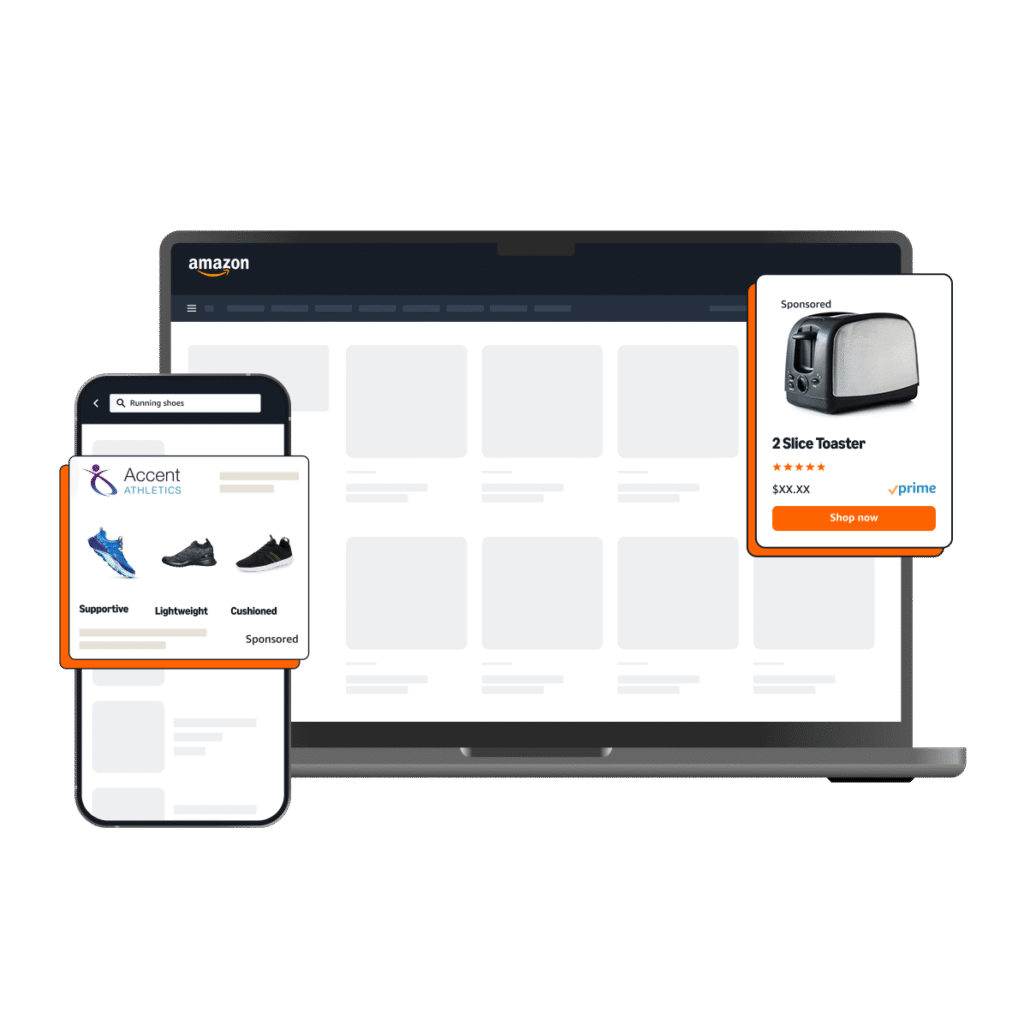
Eligibility and Amazon Requirements
Vendor Central is invitation only. Amazon’s vendor recruitment teams and category managers look for signals that a brand can serve Amazon’s retail strategy and customers at scale. Common indicators include an established brand presence with proven demand, a consistent ability to fulfill large wholesale purchase orders, strong product market fit in categories where Amazon wants to expand selection, and operational readiness for vendor processes such as electronic data interchange and retail analytics. Exposure at trade shows and industry events is a frequent path to discovery by Amazon buyers. Program basics are summarized by Amazon on the Vendor Program page.
Compliance readiness matters. Vendors are expected to follow standards for case pack, carton and pallet labeling, advanced shipment notices, and product safety documentation. Barcodes should follow GS1 standards; see the GS1 barcode standards. If your organization already excels on Seller Central with high review ratings and low defect rates, that track record is a positive signal. For analytics mindset and performance monitoring, see Channelinker’s guide Monitoring Performance Metrics and Analytics on Amazon.
Steps to Apply for Vendor Central
There is no public self service application form, but there is a clear, practical path to getting on Amazon’s radar and being ready to onboard quickly when an invitation arrives. Treat this as two parallel tracks: visibility and operational readiness.
Track one: increase your likelihood of discovery
Build undeniable demand. Sustain sales velocity, ratings, and review volume on your existing channels and on Seller Central if you already sell there. A strong track record on third party listings sends a powerful signal to retail buyers. If you need a playbook, use our companion guide Monitoring Performance Metrics and Analytics on Amazon to set targets for conversion and Buy Box share, and review Product Listing and Optimization on Amazon to raise conversion.
Show up where Amazon scouts. Exhibit at high visibility trade shows in your category and share concise product one sheets with differentiation, certifications, and wholesale terms. Keep your website and brand store current. Many invitations start with a trade show conversation.
Network with retail decision makers. Build relationships with category managers and vendor recruiters through professional associations and targeted outreach. Share performance proof and a clear value proposition. Lean into unique IP, proprietary formulas, or design patents.

Track two: be onboarding ready well in advance
Map your data and transactions. Decide whether you will integrate with Selling Partner API for vendors or use EDI. If you choose EDI, prepare core documents most vendors use, including 850 purchase order, 855 purchase order acknowledgement, 856 advanced shipment notice, and 810 invoice. Third party primers outline these flows clearly (for example, Cleo’s EDI guide and Crossbridge’s setup checklist).
Document retail operations. Create standard work for purchase order acceptance windows, routing requests, carton and pallet labeling, and shortage investigations. Proactively train your team on deduction prevention and recovery. Practical field guides from specialists such as SupplyPike on shortage disputes and Flywheel Digital’s chargeback index will help you structure processes that protect margin.
Model vendor economics. Before you say yes, model wholesale pricing with realistic assumptions for co op, freight, damage allowances, payment terms, and potential deductions so you understand landed margin under multiple scenarios. Recent reporting shows vendor terms and concessions may evolve with macro conditions, including tariffs, which can affect unit economics (Business Insider on tariff related concessions).
Run pilot tests. Generate sample labels, packing slips, and compliant 2D or 1D barcodes that pass GS1 standards. Validate your advanced shipment notice data against Amazon specs to avoid compliance chargebacks.
When an invitation arrives, the onboarding sequence is typically: accept the invitation, sign retail terms, set up your Vendor Program account, load catalog data and images, connect integrations, complete test transactions, and fulfill initial purchase orders. Brands that prepare these items in advance move from invitation to first ship far faster.
Documents Needed
Having complete and accurate documentation speeds up onboarding. Prepare the following in advance.
Legal entity and tax documents such as incorporation or registration certificates, tax identification number, and where relevant your VAT or GST registration details. For VAT in the European Union, see the European Commission VAT overview, and for United Kingdom VAT registration guidance see UK VAT registration. For United States employer identification numbers see the IRS EIN information.
Bank and remittance information including an official bank letter or voided check with payable name matching your legal entity and remittance contact details. Product master data including universal product codes or European article numbers, variant matrices such as size and color, dimensions and weights, detailed titles and descriptions, and high resolution images on a pure white background for primary images. Compliance and safety certificates depending on category, which can include test reports, declarations of conformity, material safety data sheets, or country specific safety labels. Packaging and labeling specifications such as inner and master case pack counts, carton dimensions and weight, pallet configuration, and shipping label templates. Systems integration details for electronic data interchange or the Selling Partner API. Maintain a catalog of current documents with expiry dates noted.
Alternatives if You are Not Invited
Invitation timelines vary by category and season. If you have not been invited yet there are effective alternatives that can both grow revenue now and increase your chances of being noticed.
Operate on Seller Central to validate demand, collect reviews, and prove operational excellence. You can review a complete account creation guide at Channelinker in Creating an Amazon Seller Account. Adopt a hybrid model when you do receive an invitation by keeping best sellers on Vendor Central and continuing to sell niche or seasonal items on Seller Central. Participate in programs that spotlight innovation such as Amazon Launchpad. Work with specialist advisors or agencies that have vendor experience and references in your category. In parallel, keep building catalog strength and inventory discipline using multi channel tools and integrations.
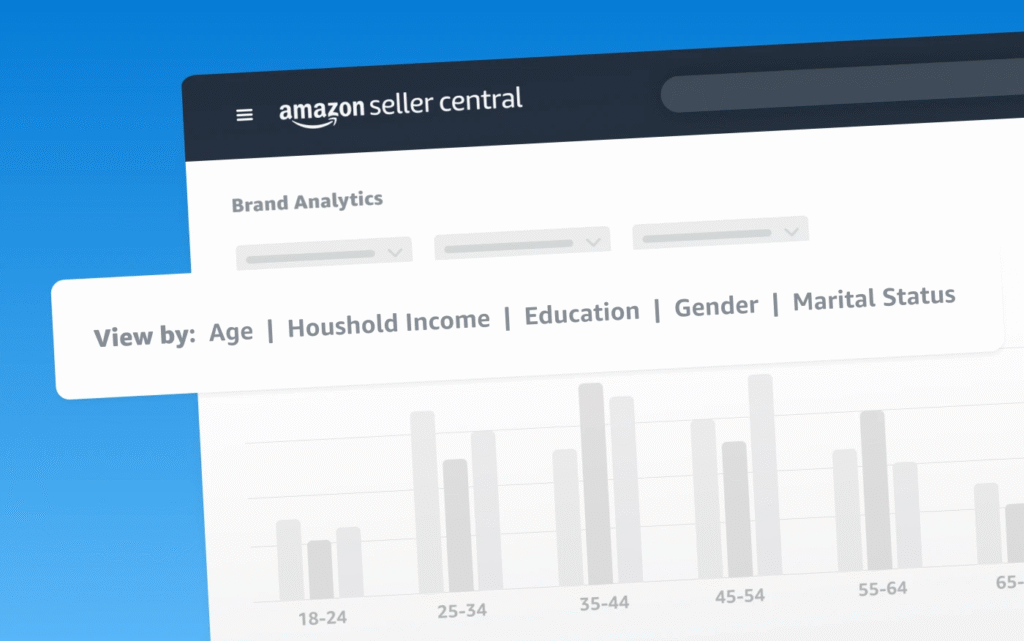
Tips to Get Noticed by Amazon
Focus on genuine differentiation by highlighting patents, proprietary formulas, or unique manufacturing methods. Lead with proof through concise case studies, retail velocities, or sell through rates from other channels. Excel on Seller Central with high conversion rates, strong ratings, and efficient fulfillment, and ensure your A Plus content and brand store are polished. Invest in public relations since coverage by respected media or industry analysts raises your profile. Be prepared on price and terms because vendor managers work to category margin and working capital targets. Show operational maturity by demonstrating reliable lead times, quality control processes, and compliance discipline with an escalation path for shortages or defects.
Amazon Vendor Central and Seller Central
The two programs serve different strategies. Use the expanded comparison below to decide which model fits each part of your catalog, and where a hybrid approach makes sense.
How to choose
Start with a simple decision path. If you need scale, retail trust, and can support wholesale terms with compliance discipline, pursue Vendor Central while keeping a direct channel for innovation. If you need agility, assortment testing, and price control, prioritize Seller Central. Many brands combine both. Place proven winners with stable margin on Vendor Central while using Seller Central for new launches and long tail variations. If you run a hybrid program, align operations and data flows early. Channelinker can help coordinate first party and third party catalogs and reporting across teams through Amazon Integration Solutions and the overview of Vendor Channels for first party.
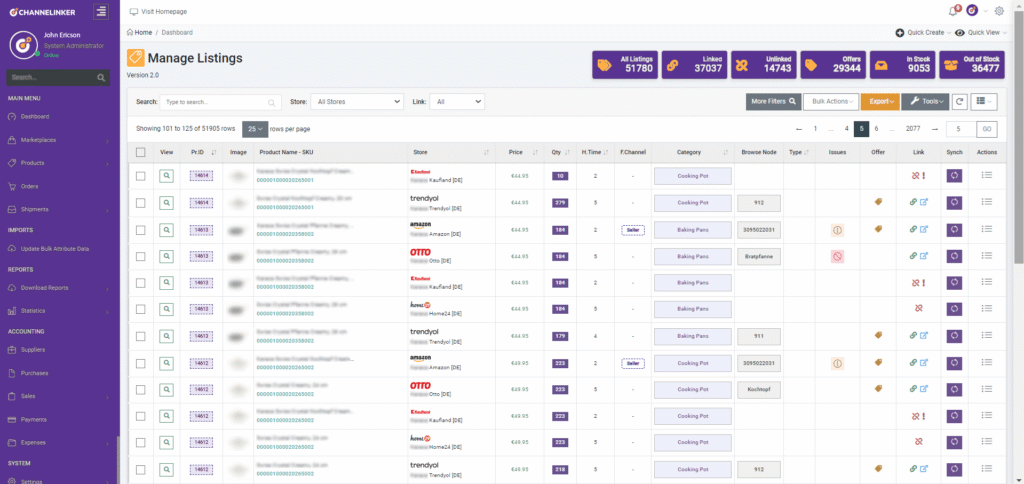
Latest Amazon Statistics for 2025
Grounding your strategy in current data helps frame the vendor opportunity.
Amazon reported total revenue of $638 billion for 2024, up 11 percent year over year, with North America $387.5 billion, International $142.9 billion, and AWS $107.6 billion according to the 2024 Annual Report and CEO 2024 shareholder letter.
Insider Intelligence research indicates Amazon is on track to surpass 40 percent of United States ecommerce sales in 2025, while representing roughly seven percent of total United States retail sales overall. See Amazon will surpass 40 percent of US ecommerce sales and the broader US ecommerce market shares 2025 overview.
Amazon’s marketplace continues to be the primary growth engine. The 2024 shareholder letter reiterates that more than 60 percent of store sales come from independent sellers, underscoring the importance of a hybrid strategy that balances first party and third party routes to market (CEO letter).
Prime Day 2025 set new records for independent sellers, with Amazon reporting the largest event to date and record item counts sold by third party brands. See Amazon seller stats on Prime Day 2025 for program level context as you plan seasonality and promotional calendars.
Logistics capabilities continue to expand. In 2025 Amazon announced a significant same day grocery delivery expansion to more than 1,000 cities and towns now with a plan to reach over 2,300 locations by year end, highlighting the continued investment in last mile speed that benefits both retail and marketplace offers (coverage via Barron’s and Investor’s Business Daily).
For additional third party context and seller population estimates used by many in the industry, see independent roundups such as eDesk’s Amazon statistics and RevenueGeeks’ seller statistics. Treat non Amazon sources as directional rather than absolute.
Frequently Asked Questions: How to Become an Amazon Vendor
Can I become an Amazon Vendor if my company is based in the United States?
Yes, United States brands can be invited to Vendor Central. Ensure you have an employer identification number and wholesale readiness, including case pack labeling, carton compliance, and the ability to meet purchase order timelines. Review the IRS guidance on employer identification numbers and Amazon’s Vendor Program overview.
What are the requirements for vendors in the European Union and the United Kingdom?
Vendors supplying inventory to fulfillment centers in the European Union or the United Kingdom generally need VAT registration and compliant invoices. Review the European Commission VAT overview and UK VAT registration. Maintain GS1 barcodes as the product identity standard.
How can brands in Germany improve their chance of a Vendor Central invitation?
German brands benefit from trade fair visibility at events where Amazon category teams often scout. Demonstrate product market fit with strong sell through on local channels and on Amazon Seller Central, and ensure you can meet packaging and labeling standards. Prepare documents in German and English to speed onboarding. For marketplace background in German speaking markets review Channelinker’s Online Marketplaces overview.
Is Vendor Central available for companies in the Middle East and North Africa regions?
Amazon operates retail sites in the region, and vendor relationships are category dependent. Strengthen your case with country specific compliance such as Arabic labeling where required and secure reliable cross border logistics. Use Brand Registry for brand protection and research local VAT or GST rules. Build demand on Seller Central while pursuing vendor outreach. For integration concepts see Channelinker’s Amazon Integration Solutions.
How do Indian manufacturers position for a Vendor Central invitation?
Manufacturers in India should highlight production capacity, quality control, and export readiness including barcodes, packaging compliance, and reliable lead times. Building proof on Amazon India through Seller Central can help. For structured onboarding preparation consult the Selling Partner API documentation and align your ERP or WMS accordingly.
If I am not invited yet, what is the best path to scale in the short term
Operate as a third party on Seller Central to build demand, reviews, and operational credibility. Use Fulfillment by Amazon to deliver Prime eligible speed and keep your defect rates low. When your catalog and operations are strong, continue networking with category managers. For a full Seller Central setup walk through read Channelinker’s guide Creating an Amazon Seller Account.
Does Amazon require EDI for vendors or can I use an API
Amazon supports both electronic data interchange and the Selling Partner API for vendors. Your choice depends on your systems architecture and partner ecosystem. Review the Selling Partner API documentation and ensure your data mapping covers purchase orders, shipment confirmations, invoices, and advanced shipment notices.
Conclusion
Becoming an Amazon Vendor is not simply a larger version of third party selling, it is a different commercial model that rewards operational discipline, brand strength, and readiness to collaborate with retail teams. In 2025 the path to an invitation is clear. Build real customer demand, show up where buyers look, and be prepared operationally so that onboarding is a formality rather than a scramble. If an invitation has not arrived yet, focus on excelling in Seller Central, invest in innovation and content, and keep your brand visible at the right events. When the invitation does arrive, have your documentation and integrations ready, align your team around vendor workflows, and proceed with confidence. With the right preparation, a Vendor Central partnership can become a durable growth engine for your catalog. For amazon EDI integration, you can contact with us for more information!
References and further reading
- Amazon Vendor Program overview
- Selling Partner API for vendors
- GS1 barcode standards
- European Union VAT overview
- United Kingdom VAT registration
- eDesk Amazon statistics roundup
- RevenueGeeks seller statistics
- Amazon Launchpad program
